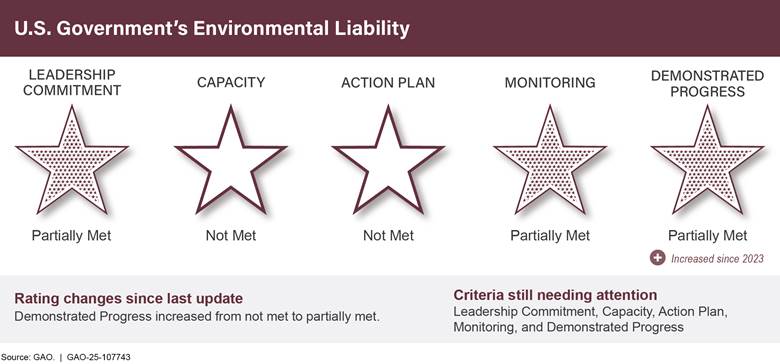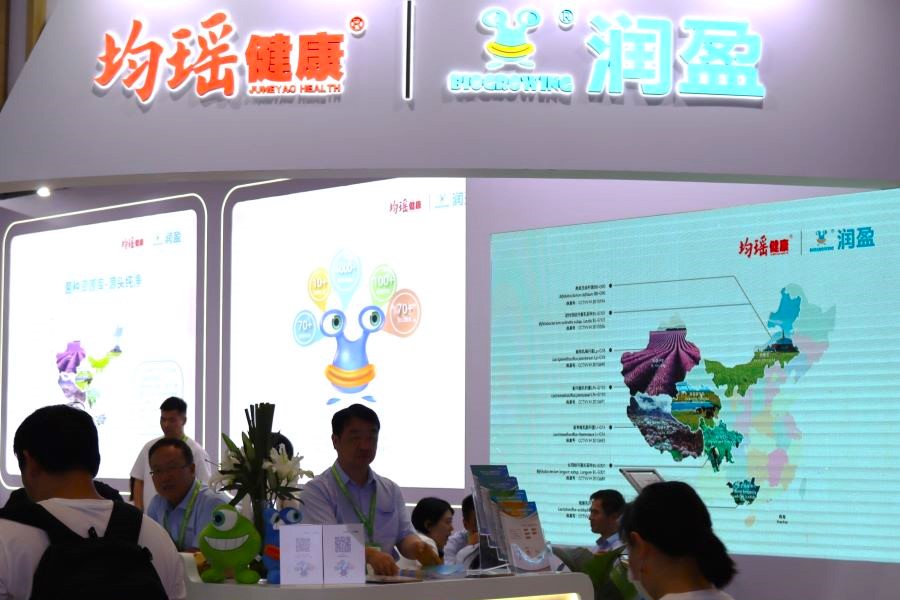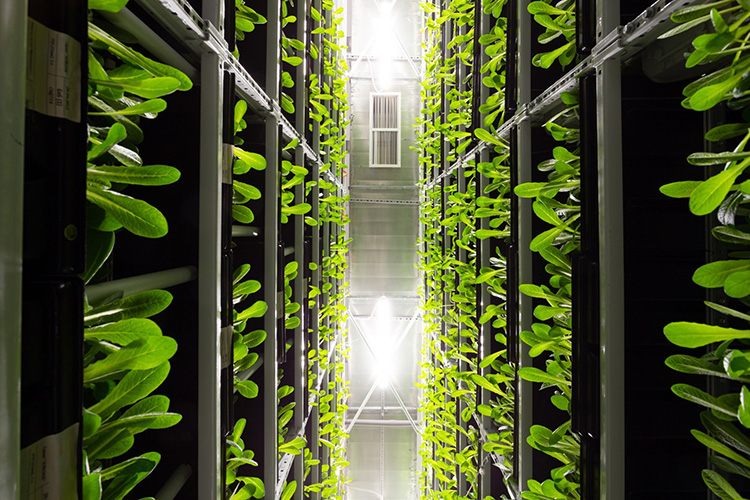
Sustainable Farmer in Illinois Receives Grown Climate Smart Grant

ROCHELLE, Ill. (WIFR) – A stateline farmer who makes an effort to practice sustainable agriculture techniques is being rewarded through the Grown Climate Smart program, a $40 million project funded by the USDA.
With a business that flows through the family lineage, the Kennays boast a long history of looking at the big picture.
“Being a sustainable farmer is a generational thing,” said Rick Kennay, co-owner of Kennay Farms Distilling in Rochelle. “You hope to pass the farm on and in order to do that, you have to pass along the soil and if you keep the soil in place, you can pass along the farm.”
In the 1880′s, the Kennay family moved from Virginia to Illinois to grow grain.
Nearly a century and a half later, family members stick to their roots by using environmentally sustainable farming practices.
“We do tillage or sometimes no tillage. If you don’t disturb the soil, it doesn’t take things with it like fertilizer and herbicides and chemicals,” Kennay said. “We install a lot of waterways, and we enroll a lot of the acres in the conservation reserve program.”
Grown Climate Smart Grant Recognizes Sustainable Farming
Now, the Kennay’s are being rewarded for their foresight with a Grown Climate Safe grant.
“It’s awesome to do these localized projects where we really promote sustainability and working with the distillery who were already focused on sustainability, it’s really exciting to see them take on our Grown Climate Smart logo onto their products and offer products to consumers to purchase with their moral compass,” said Dylan Vaca, brand and marketing manager for the DeLong Company, who are responsible for delegating Grown Climate Smart grants.
“To be recognized as a sustainable farmer is a big deal and hopefully it will get some response from, ultimately, the end consumer,” Kennay said.
Grown Climate Smart Program and Sustainable Development Goals
- Throughout 2023, the Grown Climate Smart program enrolled more than 160 farmers across 11 states.
- The program aims to support sustainable agriculture practices that align with the United Nations’ Sustainable Development Goals (SDGs).
- By implementing environmentally friendly techniques like tillage or no tillage, farmers can reduce soil erosion and minimize the use of harmful chemicals.
- Installing waterways and enrolling acres in conservation reserve programs further contribute to the preservation of natural resources.
The Kennay Farms Distillery is located in Rochelle’s historic Hub Theater, which was renovated in 2016 to hold distilling equipment.
Copyright 2024 WIFR. All rights reserved.
SDGs, Targets, and Indicators
-
SDG 2: Zero Hunger
- Target 2.4: By 2030, ensure sustainable food production systems and implement resilient agricultural practices that increase productivity and production, that help maintain ecosystems, that strengthen capacity for adaptation to climate change, extreme weather, drought, flooding, and other disasters, and that progressively improve land and soil quality.
- Indicator 2.4.1: Proportion of agricultural area under productive and sustainable agriculture.
- Indicator 2.4.2: Average income of small-scale food producers, by sex and indigenous status.
-
SDG 13: Climate Action
- Target 13.2: Integrate climate change measures into national policies, strategies, and planning.
- Indicator 13.2.1: Number of countries that have communicated the strengthening of institutional, systemic, and individual capacity-building to implement adaptation, mitigation, and technology transfer.
- Indicator 13.2.2: Number of countries that have integrated mitigation, adaptation, impact reduction, and early warning into primary, secondary, and tertiary curricula.
-
SDG 15: Life on Land
- Target 15.1: By 2020, ensure the conservation, restoration, and sustainable use of terrestrial and inland freshwater ecosystems and their services, in particular forests, wetlands, mountains, and drylands, in line with obligations under international agreements.
- Indicator 15.1.1: Forest area as a proportion of total land area.
- Indicator 15.1.2: Proportion of important sites for terrestrial and freshwater biodiversity that are covered by protected areas, by ecosystem type.
Analysis
The article discusses a farmer who practices sustainable agriculture techniques and is being rewarded through the Grown Climate Smart program, funded by the USDA. Based on the content of the article, the following SDGs, targets, and indicators can be identified:
1. SDG 2: Zero Hunger
The article highlights the farmer’s efforts to ensure sustainable food production systems and implement resilient agricultural practices. This aligns with Target 2.4 of SDG 2, which aims to increase productivity and production while maintaining ecosystems and improving land and soil quality. The indicators relevant to this target are:
- Indicator 2.4.1: Proportion of agricultural area under productive and sustainable agriculture.
- Indicator 2.4.2: Average income of small-scale food producers, by sex and indigenous status.
2. SDG 13: Climate Action
The Grown Climate Smart program mentioned in the article focuses on promoting sustainability and working with farmers who already prioritize sustainability. This relates to Target 13.2 of SDG 13, which emphasizes integrating climate change measures into national policies and planning. The indicators associated with this target are:
- Indicator 13.2.1: Number of countries that have communicated the strengthening of institutional, systemic, and individual capacity-building to implement adaptation, mitigation, and technology transfer.
- Indicator 13.2.2: Number of countries that have integrated mitigation, adaptation, impact reduction, and early warning into primary, secondary, and tertiary curricula.
3. SDG 15: Life on Land
The article mentions the farmer’s use of environmentally sustainable farming practices, such as tillage or no tillage and enrolling acres in the conservation reserve program. These practices contribute to the conservation, restoration, and sustainable use of terrestrial ecosystems, aligning with Target 15.1 of SDG 15. The indicators relevant to this target are:
- Indicator 15.1.1: Forest area as a proportion of total land area.
- Indicator 15.1.2: Proportion of important sites for terrestrial and freshwater biodiversity that are covered by protected areas, by ecosystem type.
Table: SDGs, Targets, and Indicators
| SDGs | Targets | Indicators |
|---|---|---|
| SDG 2: Zero Hunger | Target 2.4: By 2030, ensure sustainable food production systems and implement resilient agricultural practices that increase productivity and production, that help maintain ecosystems, that strengthen capacity for adaptation to climate change, extreme weather, drought, flooding, and other disasters, and that progressively improve land and soil quality. |
|
| SDG 13: Climate Action | Target 13.2: Integrate climate change measures into national policies, strategies, and planning. |
|
| SDG 15: Life on Land | Target 15.1: By 2020, ensure the conservation, restoration, and sustainable use of terrestrial and inland freshwater ecosystems and their services, in particular forests, wetlands, mountains, and drylands, in line with obligations under international agreements. |
|
Source: wifr.com

Join us, as fellow seekers of change, on a transformative journey at https://sdgtalks.ai/welcome, where you can become a member and actively contribute to shaping a brighter future.






